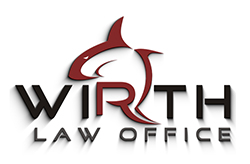Dogs: Not Always Docile
 Dogs are a part of most people’s daily lives. Some are even seen as family members and compared to children. That being said, one man’s pet can be another man’s nightmare. Dogs aren’t always friendly to everyone they meet, especially if they’re trained as guard dogs or not used to people.
Dogs are a part of most people’s daily lives. Some are even seen as family members and compared to children. That being said, one man’s pet can be another man’s nightmare. Dogs aren’t always friendly to everyone they meet, especially if they’re trained as guard dogs or not used to people.
For a number of reasons, dogs occasionally attack adults and kids. Dog bites can result in expensive medical bills. You could also lose wages from taking time off work to recover.
They also have the potential to cause serious, lasting damage. However, the most common result of a dog bite is emotional distress. This is most prevalent in children, who inherently love and trust animals.
Depending on your situation, you may be due compensation. Oklahoma City dog bite attorneys at Wirth Law Office can help you get the restitution you deserve.
Dog Bite Compensation
You could be due compensation if you were the victim of an unprovoked attack by a dog on property that you had a right to be on. Dog owners are responsible for restraining their pets, even on their own property.
If you were invited to be on someone’s property or went there in a work capacity, they had a responsibility to restrain and/or supervise their dog. If you are someone whose job brings them onto other people’s property, such as a delivery driver, postal worker, or meter reader, you may be due compensation if you are bit by a dog.
Contrary to popular belief, keeping a dog on a leash or chain doesn’t necessarily keep them from hurting people. In fact, dogs on chains are 2.8 times more likely to bite.
Even on public property, people with dogs must keep them under control. According to Oklahoma law, public property includes streets, sidewalks, parks, playgrounds, and privately owned businesses.
While many public places require dogs to be kept on leashes, this doesn’t eliminate the possibility of being bitten. If a dog bites you on public property or private property you were rightfully on, and you didn’t provoke the attack, you may be due compensation.
The personal injury attorneys at Oklahoma City’s Wirth Law Office offer skilled representation. They can help you get what you deserve.
Statistics on Dog Bites
 Every year in the U.S., there are approximately 4.5 million dog bites. However, only around 800,000 of those require medical treatment, which is less than 20%. Most dog bites come from dogs who aren’t spayed or neutered. While no one has to have their dog fixed, it’s important to understand the risks they take if they don’t.
Every year in the U.S., there are approximately 4.5 million dog bites. However, only around 800,000 of those require medical treatment, which is less than 20%. Most dog bites come from dogs who aren’t spayed or neutered. While no one has to have their dog fixed, it’s important to understand the risks they take if they don’t.
In 2019, the number of people bitten by a dog was one in 73, which is a little over 1%. That number may seem small, but you never know if you’ll end up in that 1%. Also in 2019, over 5,800 USPS workers were bit by a dog. You may consider it an occupational hazard, but you could still be due compensation.
Homeowners’ insurance usually covers dog bites. In 2019, insurance companies paid out nearly $800 million in dog bite cases. In 2020, there was a 300% increase in dog bites, due in part to the COVID pandemic.
With dog bites on the rise, you need an attorney on your side who will fight for you to receive all the compensation you are owed. The Oklahoma City dog bite attorneys at Wirth Law Office want you to have the best chance at getting what you deserve.
What about other animals?
Dogs aren’t the only animals who could attack you. Livestock such as horses, sheep, goats, and cattle have the potential to harm a person or damage their property. The animal’s owner is liable if it hurts anyone or damages any property. Dogs could also cause property damage. Their owner would be liable for that in the same way as a dog bite.
Consultation with an Oklahoma City Dog Bite Attorney

Were you bit by a dog that you didn’t provoke? Did the attack happen on public property or private property you were allowed on? If so, you need expert representation from the personal injury attorneys at Wirth Law Office – Oklahoma City.
They can help you figure out the best way to get the compensation you deserve. For a consultation, call 405-888-5400 or fill out the form at the top of the page.








